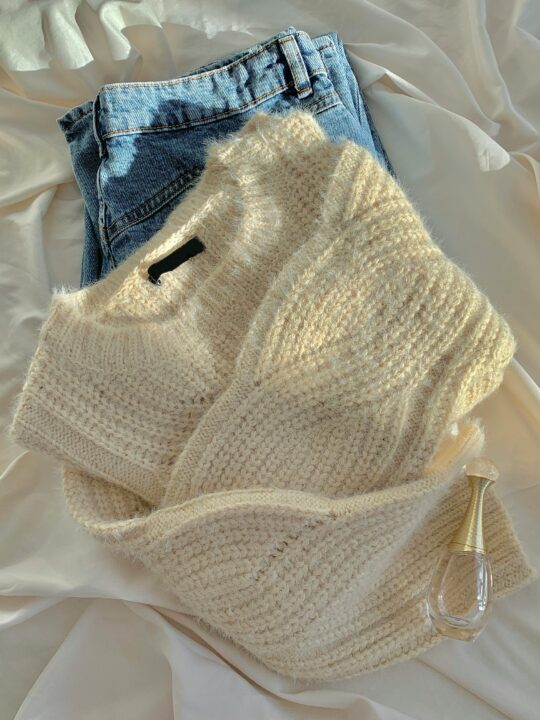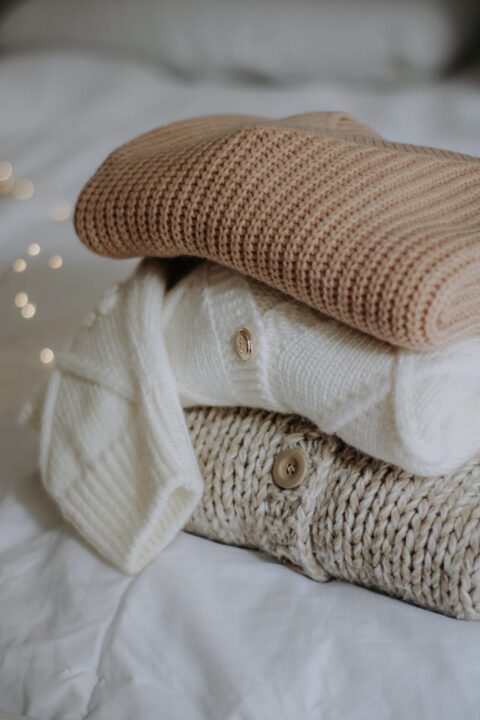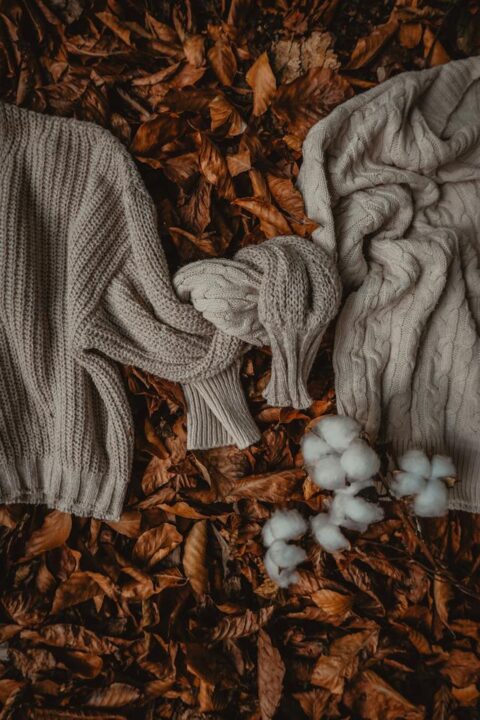Wool is one of the world’s most versatile and beloved fabrics, offering warmth, comfort, and durability. Boiled wool and felted wool are two popular types of wool that are often compared and contrasted due to their similarities in texture and appearance.
Boiled wool is created by subjecting wool causing it to shrink and become denser. On the other hand, felted wool is created by applying moisture, heat, and friction to wool fibers, causing them to interlock and form a compact fabric.
Despite their similarities, boiled wool, and felted wool have distinct properties that make them suitable for different applications.
In this blog post, we will explore the differences between boiled wool and felted wool. Their unique properties and characteristics, as well as their advantages and disadvantages.
Boiled Wool And Felted Wool
Boiled wool is a type of fabric that has been subjected to a process called fulling, which involves agitating and shrinking the wool fibers to create a dense, felted fabric. The wool is first woven or knitted into a loose fabric, then it is washed in hot water and agitated.

This is to encourage the fibers to shrink and interlock with each other, creating a thicker, more durable fabric that is highly resistant to wind, water, and wear.
On the other hand, Felted wool is made by matting together wool fibers through a process called felting. which involves applying heat, moisture, and pressure to the wool fibers. This process causes the fibers to bind together, creating a dense, non-woven fabric that is strong, durable and less prone to fraying.
Overview of Boiled Wool And Felted Wool Properties
Here are a few comparisons between boiled wool and felted wool properties
| Property | Boiled wool | Felted wool | |
| 1 | Production Process | Wool fibers are washed and agitated in hot water. | Wool fibers are matted together using heat, moisture, and pressure. |
| 2 | Texture | Slightly textured surface. | Smooth, flat surface with a slightly fuzzy texture. |
| 3 | Thickness | Thicker and denser. | Can be less dense. |
| 4 | Water Resistance | More water-resistant | Less water-resistant. |
| 5 | Durability | Durability and ability to withstand wear and tear. | More delicate and prone to pilling. |
| 6 | Uses | Often used for outerwear and cold-weather accessories. | Commonly used for hats, bags, and other accessories, as well as home decor |
Differences Between Boiled Wool And Felted Wool
Boiled wool and felted wool are often confused with each other, but they have distinct differences. This includes

Production Process
Boiled wool is made from sheep’s wool that has been knit or woven into a fabric and then subjected to a hot, soapy water bath. The heat and agitation cause the wool fibers to shrink and interlock, creating a dense felted fabric. Also, a wind-resistant fabric that is perfect for outerwear and cold-weather accessories
In contrast, felted wool mats together wool fibers using heat, moisture, and pressure. This process causes the fibers to bond together, resulting in a smooth, flat surface with a slightly fuzzy texture. This process can be done by hand or using machines. Felted wool is often used for hats, bags, and other accessories, as well as home decor items such as rugs and wall hangings.
Texture
Boiled wool has a slightly textured surface, while felted wool has a smooth, flat surface with a slightly fuzzy texture. This difference in texture can affect how the fabric looks and feels, making it more suitable for certain applications.
Thickness
Boiled wool is typically thicker and denser than felted wool. This thickness and density contribute to its warmth and wind resistance, making it ideal for cold-weather garments. It also tends to be less stretchy than felted wool, making it more suitable for tailored garments such as coats and jackets. If you’re looking for the warmest wool for winter, boiled wool is a great option.
In contrast, felted wool can be less dense, which makes it more suitable for accessories and home decor items. It is more flexible and stretchy than boiled wool, which makes it better suited for garments that require more give, such as hats and scarves.
Water Resistance
Boiled wool is more water-resistant than felted wool due to the tightly woven fibers. This water resistance can be an essential feature for outdoor garments, as it helps to keep the wearer dry and comfortable in wet conditions.
Durability
Boiled wool is known for its durability and ability to withstand wear and tear. This makes it an excellent choice for outerwear that will be subjected to harsh conditions. Felted wool, on the other hand, can be more delicate and prone to pilling, which limits its use in certain applications.
Read also: Picks for 2024: Homecoming Dress Trends You Can’t Miss
Eco-friendly
Boiled wool is a sustainable and eco-friendly fabric made from natural undyed wool, which requires less energy to produce than felted wool. It is biodegradable and can be composted, unlike felted wool fabrics which may contain synthetic fibers and additives that make recycling or composting difficult.
Maintenance
Both types of wool require careful washing to avoid shrinking. Boiled wool should be washed in cold water and air-dried. Felted wool can be hand washed or dry-cleaned, and should also be air-dried. The wool fabric does not need to be ironed. If you must iron, use a low heat setting and a pressing cloth to protect the fibers.
Uses
Boiled wool and felted wool are commonly used for different purposes. Boiled wool is often used for outerwear, such as coats, jackets, and hats, as well as cold-weather accessories like scarves and gloves.
Felted wool is commonly used for hats, bags, and other accessories, as well as home decor items such as rugs and wall hangings. The differences in texture, thickness, and water resistance make them suitable for different applications.
Read also: 10 Iconic Honduras Traditional Clothing
Pros and Cons of Boiled Wool and Felted Wool Garments
Each type of wool has its pros and cons, and the choice ultimately depends on the intended use.
Pros and Cons of Boiled Wool
- Provide excellent insulation and warmth
- Is water-resistant and wind-resistant
- Has a unique texture and appearance
- Can be used for a variety of projects, from clothing to home decor
Cons
- Can be expensive
- May not be as flexible as other materials
- Requires careful washing to avoid shrinking
Pros and Cons of Felted Wool
- Is extremely durable and long-lasting
- Has a smooth texture that is ideal for crafting projects
- Can be made into a variety of shapes and forms
- Is less expensive than boiled wool
Cons
- May not provide as much insulation as boiled wool
- Is not as wind-resistant or water-repellent as boiled wool
- Can be difficult to work with due to its density
When to Choose Boiled Wool Over Felted Wool and Vice Versa
The choice between boiled wool and felted wool depends on the intended use. If you are looking for a warm, water-resistant fabric for outerwear, boiled wool fabric is the way to go. If you want a durable, smooth-textured material for crafting projects or accessories, felted wool is the better choice.
Conclusion
Boiled wool and felted wool are two types of wool fabrics, each with unique characteristics. Boiled wool is created by washing wool in hot water and agitation to create a dense, water-repellent fabric, while felted wool is made by compressing wool fibers using heat, moisture, and pressure.
The choice depends on the intended use, as boiled wool is ideal for outerwear and home decor, while felted wool is perfect for crafting projects and accessories. Ultimately, both types of wool are excellent choices that offer durability, versatility, and, and long-lasting fabrics.



